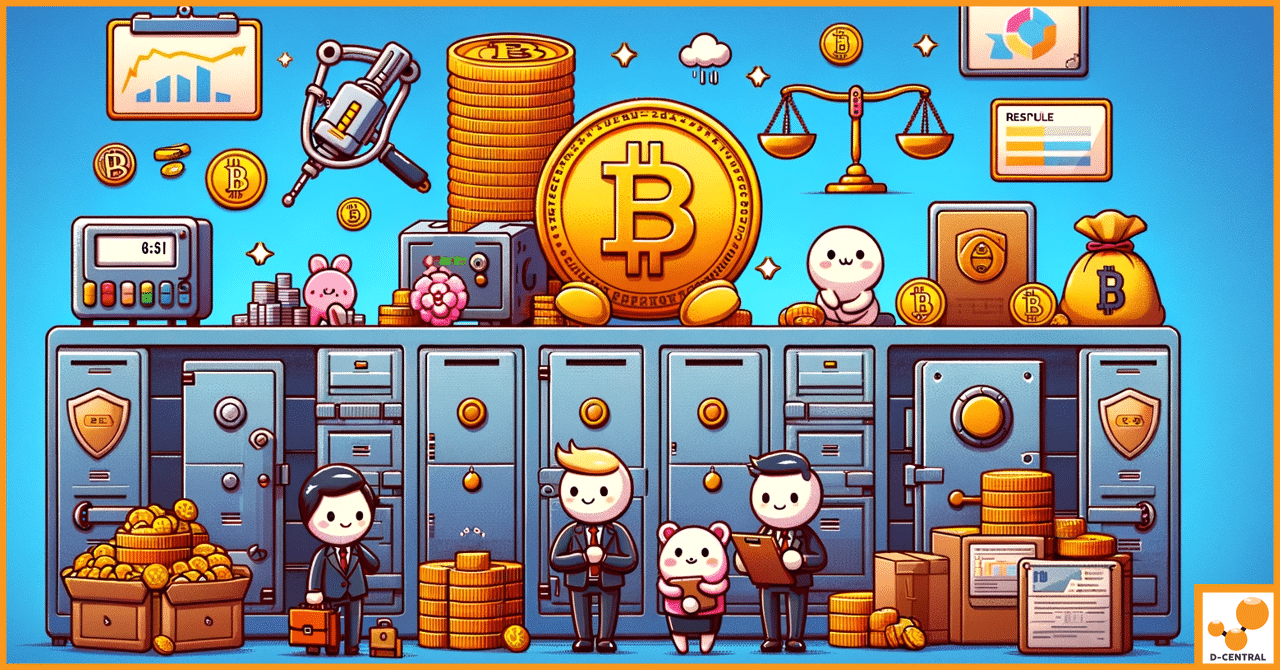
How Bitcoin Is The Key to a Future of Unprecedented Financial Freedom
In today’s interconnected world, the traditional financial system plays a pivotal role in the global economy, facilitating transactions, savings, investments,
4479 Desserte Nord Autoroute 440, Laval, QC H7P 6E2

In the complex tapestry of finance and economics, the concept of a “store of value” emerges as a fundamental pillar, underpinning the stability and predictability of financial systems worldwide. At its core, a store of value represents an asset that can be saved, retrieved, and exchanged in the future without significant deterioration in its worth. This enduring quality makes it a cornerstone in both personal financial planning and the broader economic landscape.
The importance of a reliable store of value cannot be overstated. It is the bedrock upon which individuals build their financial security, allowing for the preservation and growth of wealth over time. In the macroeconomic arena, stores of value play a pivotal role in maintaining the equilibrium of financial markets and supporting the economic health of nations. They offer a buffer against the caprices of market volatility and economic upheavals, providing a semblance of stability in an otherwise unpredictable financial world.
As we delve deeper into this topic, we will explore the key attributes that define a good store of value. These include its ability to withstand the test of time (perpetual lifespan and infinite demand), its resilience against depreciation (stability and durability), its unchanging nature (immutability), and its rarity or uniqueness (scarcity). Each of these characteristics contributes to an asset’s ability to hold value, making it an indispensable tool in the arsenal of both the seasoned investor and the prudent saver. By understanding these attributes, we can better navigate the complex world of finance and make informed decisions that secure our economic future.
A store of value is a fundamental financial concept, referring to an asset that can be saved, retrieved, and exchanged at a later time without losing its intrinsic value. This attribute is crucial in a world where economic variables are constantly in flux. A good store of value should ideally maintain its worth or even appreciate over time, irrespective of external economic pressures such as inflation, market volatility, or geopolitical upheavals.
The notion of a store of value is not a modern invention but has been a part of human economic activity for millennia. In ancient times, people used commodities like grains, livestock, and later precious metals like gold and silver as stores of value. These were items that held intrinsic value, were widely accepted, and could be stored for long periods without losing their worth.
As societies evolved, so did the concept of a store of value. The introduction of coinage and, subsequently, paper money, marked significant milestones. These forms of currency were easier to transport and divide, but their value was often tied to the trust in the issuing authority or backed by commodities like gold (the gold standard).
In the 20th century, the abandonment of the gold standard gave rise to fiat currencies, which are not backed by physical commodities but derive their value from the trust and stability of the issuing governments. This shift marked a significant evolution in the concept of stores of value, as it moved away from tangible assets to trust-based systems.
While a store of value is a key financial concept, it is distinct from other related terms such as “medium of exchange” and “unit of account.” A medium of exchange is an asset used to facilitate the sale, purchase, or trade of goods and services (like currency), while a unit of account is a standard numerical unit of measurement of the market value of goods, services, and other transactions.
What sets a store of value apart is its ability to preserve wealth over time, making it a safe haven during economic uncertainty. Unlike a medium of exchange, which is primarily used for current transactions, a store of value is about the future, ensuring that today’s assets will retain their purchasing power tomorrow. This distinction is crucial in understanding the role of different financial instruments and assets in both personal finance and the broader economic system.
A quintessential attribute of a good store of value is its ability to withstand the test of time, maintaining or increasing its worth across generations. This perpetual lifespan and infinite demand are vital in ensuring that the asset does not become obsolete or lose relevance. Stability and longevity in value are crucial, especially in a world where economic conditions can change rapidly.
Historically, gold has been a prime example of an asset with a perpetual lifespan and infinite demand. Its allure and value have remained relatively stable over centuries, transcending cultural and geographical boundaries. In modern financial systems, certain government bonds or blue-chip stocks also exemplify this attribute, maintaining value and demand over extended periods.
Stability and durability are essential for an asset to be a reliable store of value. This means the asset should be resistant to external economic shocks, such as inflation or market crashes, and should not depreciate over time. An asset that can preserve wealth, even in turbulent times, is highly valued.
Real estate in prime locations has historically shown remarkable stability and durability as a store of value. Despite economic cycles, prime real estate tends to appreciate over the long term. Similarly, certain stablecoins in the cryptocurrency market aim to offer stability by being pegged to less volatile assets like fiat currencies or gold.
Immutability refers to the characteristic of an asset that prevents it from being altered or degraded. This quality is crucial in maintaining the asset’s value over time. An immutable store of value ensures that the fundamental characteristics of the asset remain unchanged, preserving its worth.
Cryptocurrencies like Bitcoin offer a high degree of immutability due to their decentralized and cryptographic nature, making them resistant to tampering or degradation. In contrast, fiat currencies, which can be subject to government policies and printing, exhibit lower immutability.
Scarcity is a powerful driver of value. The basic economic principle of supply and demand dictates that limited supply, coupled with high demand, leads to increased value. An asset that is scarce is more likely to retain its value over time, as it becomes a sought-after commodity.
Gold’s enduring value is partly due to its scarcity; it cannot be manufactured and is limited in supply. Similarly, cryptocurrencies like Bitcoin have a capped supply, ensuring scarcity. The finite nature of these assets makes them attractive as stores of value, as their limited availability inherently drives demand and value.
Gold, often revered for its luster and rarity, has been a symbol of wealth and a store of value for thousands of years. Historically, it has played a central role in many cultures and economies around the world. From being used in trade and as a standard for currency valuation (the gold standard), gold’s intrinsic value has been recognized universally. Its appeal lies in its physical properties: it does not corrode, can be easily melted and shaped, and its scarcity ensures its value.
In the contemporary financial landscape, gold continues to hold significant value. It is seen as a ‘safe haven’ asset, often increasing in value during times of economic uncertainty or inflation. Gold’s relevance today extends beyond just being a physical asset; it influences financial markets and is a part of many investment portfolios, serving as a hedge against market volatility and currency devaluation.
Fiat currencies, such as the US Dollar, Euro, or Japanese Yen, are modern examples of stores of value. Unlike gold or other commodities, fiat currencies derive their value not from physical properties but from the trust and stability of the governments that issue them. They are used globally for trade, investment, and savings, playing a crucial role in the global economy.
While fiat currencies are widely used and accepted, they are not without their risks. Their value can be influenced by government policies, economic conditions, and inflation rates. For instance, excessive printing of money can lead to inflation, reducing the purchasing power of the currency. This potential for depreciation, especially in countries with unstable economies or political turmoil, highlights the risks associated with fiat currencies as stores of value. However, in stable economies, they generally offer a reliable means of transactions and wealth storage, albeit with some level of inflationary risk.
In the realm of modern finance, cryptocurrencies have emerged as a novel and increasingly popular store of value. Bitcoin, the first and most well-known cryptocurrency, was introduced in 2009 as a decentralized digital currency. Since then, a multitude of other cryptocurrencies, such as Ethereum, Litecoin, and Ripple, have entered the market. These digital assets are built on blockchain technology, offering a level of security, transparency, and decentralization not typically found in traditional financial systems.
Cryptocurrencies, particularly Bitcoin, have been lauded for their potential as a store of value, often compared to digital gold. This comparison stems from their finite supply – Bitcoin, for example, has a cap of 21 million coins – which mimics the scarcity of precious metals. However, the performance of cryptocurrencies as a store of value has been a subject of debate, primarily due to their price volatility. While there have been periods of significant appreciation in value, exemplified by Bitcoin’s historic price surges, the market has also experienced sharp declines. This volatility underscores the nascent and speculative nature of cryptocurrencies but does not negate their potential as a modern store of value, especially as they gain more mainstream acceptance and regulatory clarity.
In today’s dynamic economic landscape, marked by rapid technological advancements, geopolitical shifts, and occasional financial crises, the evaluation of stores of value has become increasingly complex. Traditional stores of value like gold and real estate continue to play a significant role, but their performance is now interwoven with broader global economic trends, including inflation rates, interest rate policies by central banks, and international trade dynamics.
For instance, gold often sees an uptick in value during periods of high inflation or geopolitical instability, as investors seek safe-haven assets. Real estate markets, on the other hand, are more closely tied to local economic conditions and policies, such as tax laws and interest rates, making their value more region-specific.
The rise of digital assets, particularly cryptocurrencies, has introduced a new variable in the equation. Their value is influenced not just by traditional economic factors but also by technological adoption, regulatory changes, and shifts in investor sentiment. The volatility of cryptocurrencies highlights the nascent nature of this asset class but also underscores its potential to redefine what constitutes a store of value.
Looking ahead, several factors are likely to influence the landscape of stores of value. The increasing digitization of the economy suggests that digital assets, including cryptocurrencies and NFTs, may become more mainstream, potentially offering new opportunities for wealth preservation and growth. However, their adoption will largely depend on regulatory frameworks, technological advancements, and market maturation.
Moreover, environmental, social, and governance (ESG) factors are becoming increasingly important in investment decisions. This shift could impact traditional stores of value like gold and real estate, as investors seek assets that not only preserve wealth but also align with broader sustainability and ethical standards.
Inflation and currency devaluation risks in various economies may also lead to a reevaluation of fiat currencies as stores of value. This could result in increased interest in assets that are perceived as more resistant to inflationary pressures, such as precious metals or certain types of real estate.
In conclusion, the concept of what constitutes a good store of value is evolving, influenced by a myriad of factors ranging from economic policies and global events to technological innovations and societal shifts. As the world continues to change, so too will the strategies for preserving and growing wealth, requiring investors and individuals alike to stay informed and adaptable.
When integrating stores of value into personal financial portfolios, diversification is key. This approach mitigates risk and balances the portfolio across different asset classes. Here are some strategies:
While stores of value are designed to preserve wealth, they are not without risks and considerations:
Incorporating stores of value into personal financial planning requires a balanced approach, considering both the potential benefits and inherent risks. Staying informed, understanding your own risk tolerance, and being prepared to adjust your strategy as market conditions change are crucial steps in effectively managing your portfolio.
As we draw the curtains on our journey through the diverse landscape of stores of value, we find ourselves enriched with insights that bridge the past, present, and future of financial preservation and growth. This exploration has taken us from the ancient vaults of gold and precious metals to the digital realms of cryptocurrencies, each holding its unique allure and promise as a bastion of value in an ever-evolving economic world.
We began by understanding the timeless appeal of assets like gold, whose perpetual lifespan and infinite demand have made it a bedrock of stability across civilizations. Then, we ventured into the world of modern finance, where stability and durability are sought in assets like real estate and certain digital currencies, each offering a haven against the tides of market volatility.
The concept of immutability, especially highlighted in the digital currency space, emerged as a beacon of reliability in an age where technological advancements are rapid and relentless. And as we navigated through the nuances of scarcity, we saw how it breathes value into assets, be it the finite nature of gold or the capped supply of Bitcoin.
In this narrative of financial wisdom, one thing becomes clear: the importance of understanding and utilizing stores of value cannot be overstated. They are not just financial instruments; they are the storytellers of our economic resilience and adaptability. As we stand at the crossroads of traditional and digital finance, the choices we make in selecting our stores of value are more than just investment decisions; they are reflections of our understanding of the past and our vision for the future.
In a world where economic landscapes are continually reshaped by technology and globalization, our ability to identify and invest in reliable stores of value is paramount. It is a skill that goes beyond preserving wealth; it is about crafting a legacy of financial acumen that withstands the test of time.
As we move forward, let us carry the lessons learned from gold mines to blockchain ledgers, weaving a tapestry of financial strategies that are as diverse as they are robust. In doing so, we not only secure our financial well-being but also become active participants in the grand narrative of economic evolution.
What is a store of value?
A store of value is an asset that can be saved, retrieved, and exchanged in the future without significant deterioration in its worth, allowing it to maintain or appreciate over time despite external economic pressures.
Why is a store of value important?
A store of value is critical for financial security, saving and growing wealth over time, and providing stability against market volatility and economic shifts within both personal finance and the larger economic system.
What are the key attributes of a good store of value?
The key attributes include perpetual lifespan and infinite demand, stability and durability, immutability, and scarcity, all of which support the asset’s ability to preserve wealth.
What are some traditional stores of value?
Traditional stores of value include gold, precious metals, and fiat currencies. Gold is known for its physical properties and scarcity, while fiat currencies derive value from the trust and stability of the issuing governments.
How do modern stores of value like cryptocurrencies perform?
Cryptocurrencies such as Bitcoin are built on blockchain technology and offer security, transparency, and decentralization. They have potential as modern stores of value due to finite supply and have gained popularity despite being prone to price volatility.
What factors are influencing the future of stores of value?
The rise of digitalization, environmental and ethical considerations (ESG factors), inflation and currency devaluation, and technological disruptions are shaping the future landscape of what constitutes a good store of value.
What strategies should be considered when integrating stores of value into a financial portfolio?
A balanced allocation across asset classes, understanding individual risk tolerance, maintaining a long-term investment perspective, and regularly reviewing and adjusting the portfolio are key strategies for integrating stores of value.
What risks should be considered when choosing a store of value?
Risks include market volatility, liquidity concerns, inflation and currency risk, regulatory changes, technological risks, and economic and geopolitical shifts.
DISCLAIMER: D-Central Technologies and its associated content, including this blog, do not serve as financial advisors or official investment advisors. The insights and opinions shared here or by any guests featured in our content are provided purely for informational and educational purposes. Such communications should not be interpreted as financial, investment, legal, tax, or any form of specific advice. We are committed to advancing the knowledge and understanding of Bitcoin and its potential impact on society. However, we urge our community to proceed with caution and informed judgment in all related endeavors.
Related Posts

In today’s interconnected world, the traditional financial system plays a pivotal role in the global economy, facilitating transactions, savings, investments,

In the dynamic world of cryptocurrency, ASIC (Application-Specific Integrated Circuit) mining hardware represents a leap in technological advancement. Tailored exclusively

Bitcoin mining, the process by which new bitcoins are entered into circulation and transactions are verified on the blockchain, has